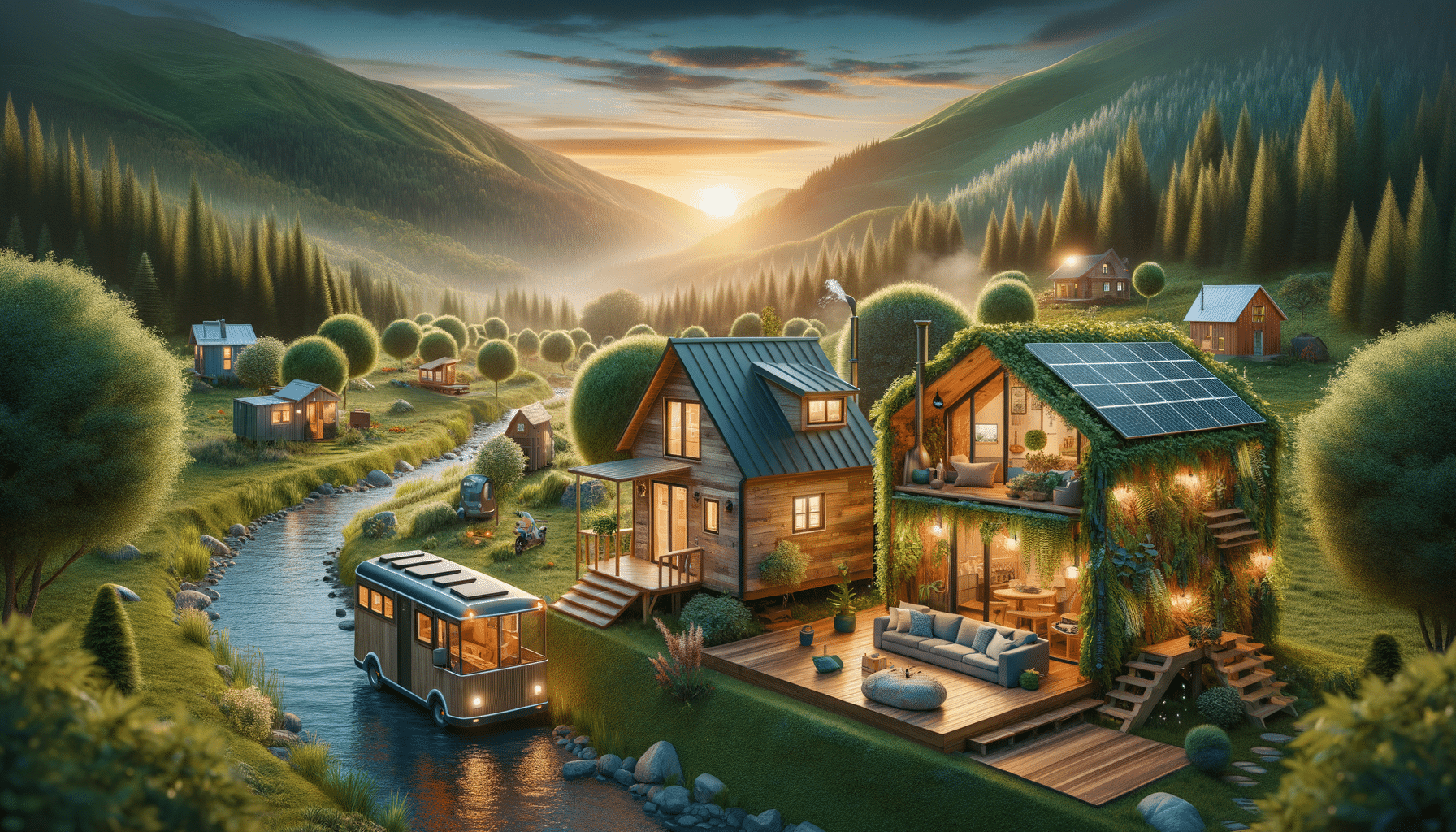Exploring the World of Tiny Homes: A Comprehensive Guide
Tiny homes offer a unique lifestyle choice, emphasizing minimalism and sustainability while addressing modern housing challenges.

Introduction to Tiny Homes
The concept of tiny homes has gained significant traction in recent years, offering a unique lifestyle choice that emphasizes minimalism and sustainability. With the rising cost of living and an increasing awareness of environmental impact, many individuals are turning to tiny homes as a viable solution. These compact living spaces, typically under 400 square feet, provide an alternative to traditional housing by prioritizing efficiency and simplicity.
The appeal of tiny homes extends beyond just financial savings. They represent a shift towards a more intentional way of living, where less is truly more. By reducing the physical footprint, tiny homes encourage inhabitants to focus on what truly matters, fostering a sense of freedom and flexibility. This movement resonates with those seeking to downsize, reduce their carbon footprint, or simply live a more clutter-free life.
Moreover, tiny homes offer a solution to the growing housing crisis in urban areas. As cities become more crowded, finding affordable and adequate housing becomes increasingly challenging. Tiny homes present a practical option that can be placed in various environments, from rural landscapes to urban backyards, thus providing a versatile and adaptable living solution.
The Benefits of Living in a Tiny Home
Living in a tiny home comes with a multitude of benefits that appeal to a wide range of individuals. One of the most significant advantages is the cost savings. Tiny homes require less material to build and maintain, resulting in lower construction and utility costs. This financial relief allows homeowners to allocate their resources towards other priorities, such as travel, hobbies, or savings.
Environmental sustainability is another compelling reason to consider tiny home living. These homes consume far fewer resources than traditional houses, both in terms of construction and daily operation. Many tiny homes are designed with eco-friendly features, such as solar panels, rainwater collection systems, and composting toilets, further reducing their environmental impact.
Additionally, tiny homes promote a simpler lifestyle. With limited space, inhabitants are encouraged to declutter and prioritize their belongings, leading to a more organized and stress-free living environment. This minimalist approach often results in increased mental clarity and reduced anxiety, as individuals learn to appreciate the essentials and let go of unnecessary possessions.
- Cost-effective living
- Eco-friendly and sustainable
- Encourages a minimalist lifestyle
Challenges of Tiny Home Living
Despite their many advantages, tiny homes also present certain challenges that potential homeowners should consider. One of the primary concerns is space limitation. Adjusting to a smaller living area can be difficult, especially for those accustomed to more spacious environments. It requires careful planning and organization to make the most of the available space.
Another challenge is the legal and zoning regulations associated with tiny homes. In some areas, building codes and zoning laws may not accommodate tiny homes, making it difficult to find a suitable location. Prospective tiny home owners must navigate these regulations to ensure compliance and avoid potential legal issues.
Furthermore, tiny home living may not be suitable for everyone. Families with children or individuals with extensive hobbies that require space might find the lifestyle restrictive. It requires a willingness to adapt and a commitment to living with less, which may not align with everyone’s preferences or needs.
- Space limitations
- Legal and zoning challenges
- Not ideal for all lifestyles
Design and Customization of Tiny Homes
The design and customization of tiny homes offer endless possibilities, allowing homeowners to create a space that reflects their personal style and needs. Despite the limited square footage, innovative design solutions make it possible to maximize functionality and comfort.
Many tiny homes feature multi-purpose furniture and clever storage solutions to optimize space. For example, foldable tables, lofted beds, and built-in shelving are common design elements that enhance usability without compromising on style. These features allow homeowners to enjoy the comforts of a traditional home within a compact space.
Customization also extends to the exterior design of tiny homes. Homeowners can choose from a variety of architectural styles, materials, and finishes to create a unique and personalized look. Whether it’s a rustic cabin aesthetic or a sleek modern design, tiny homes can be tailored to suit individual tastes and preferences.
- Multi-purpose furniture
- Innovative storage solutions
- Customizable exterior designs
Future of Tiny Homes
The future of tiny homes looks promising as more people embrace this innovative housing solution. As urbanization continues and environmental concerns grow, tiny homes are likely to become an increasingly popular choice for those seeking sustainable and affordable living options.
Technological advancements are also playing a role in the evolution of tiny homes. Smart home technologies, such as automated lighting and climate control systems, are being integrated into tiny homes to enhance convenience and energy efficiency. These innovations make tiny home living even more appealing to tech-savvy individuals.
Moreover, the tiny home movement is inspiring communities and developers to explore new ways of living. Tiny home villages and co-housing projects are emerging, offering a sense of community and shared resources. These developments provide an opportunity for individuals to connect with like-minded people while enjoying the benefits of tiny home living.
- Increased popularity
- Integration of smart technologies
- Emergence of tiny home communities